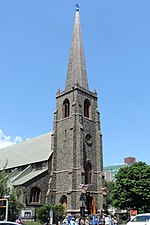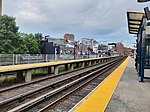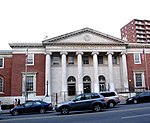Wendy's massacre
2000 in New York City2000 mass shootings in the United States2000 murders in the United States2000s in QueensAttacks in the United States in 2000 ... and 11 more
Attacks on restaurants in North AmericaCrimes in Queens, New YorkDeaths by firearm in Queens, New YorkFlushing, QueensMass murder in 2000Mass shootings in New York (state)Mass shootings in New York CityMass shootings in the United StatesMay 2000 events in the United StatesMurder in New York CityWendy's International
The Wendy's massacre was a mass murder that took place in a Wendy's fast-food restaurant at 40-12 Main Street in Flushing, Queens, New York City, New York, on May 24, 2000. Seven employees were shot in the head and five of them died. The killings were committed by former Wendy's employee John Taylor along with Craig Godineaux, who had planned to rob the restaurant's safe. Taylor was subsequently sentenced to death (later changed to life imprisonment without parole), while Godineaux was sentenced to life in prison. After the shooting, the Wendy’s location was closed and boarded up until it was eventually re-opened as a shopping center in 2011.
Excerpt from the Wikipedia article Wendy's massacre (License: CC BY-SA 3.0, Authors).Wendy's massacre
Main Street, New York Queens
Geographical coordinates (GPS) Address Nearby Places Show on map
Geographical coordinates (GPS)
| Latitude | Longitude |
|---|---|
| N 40.759186111111 ° | E -73.830188888889 ° |
Address
Main Street 40-12
11354 New York, Queens
New York, United States
Open on Google Maps









